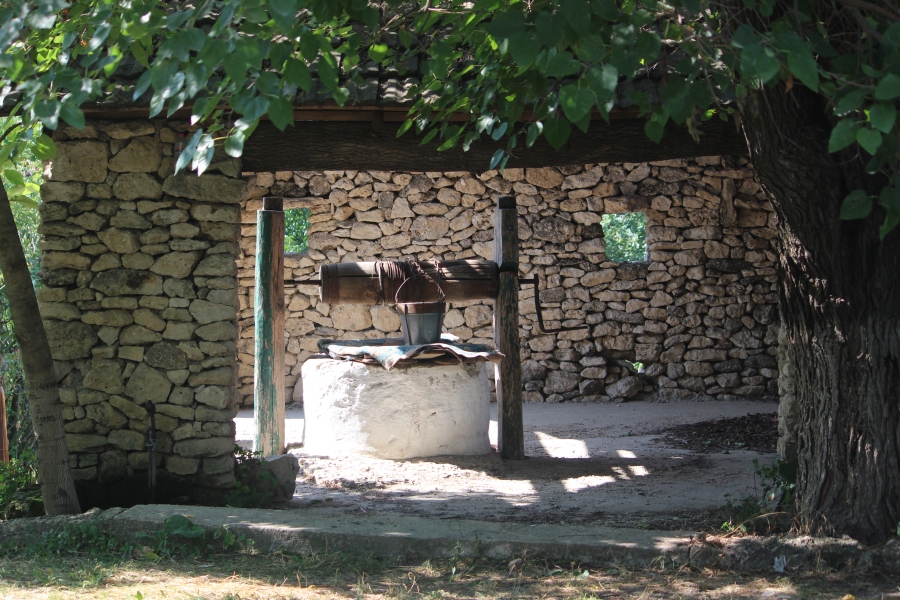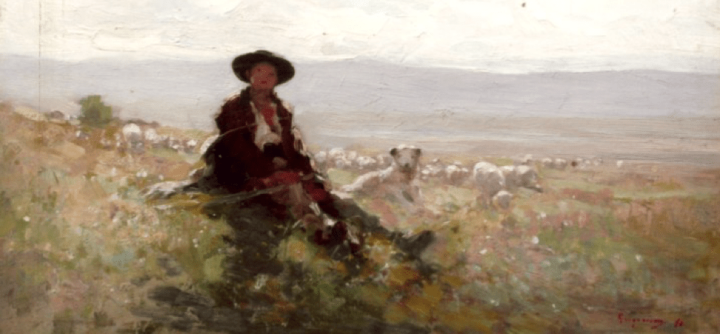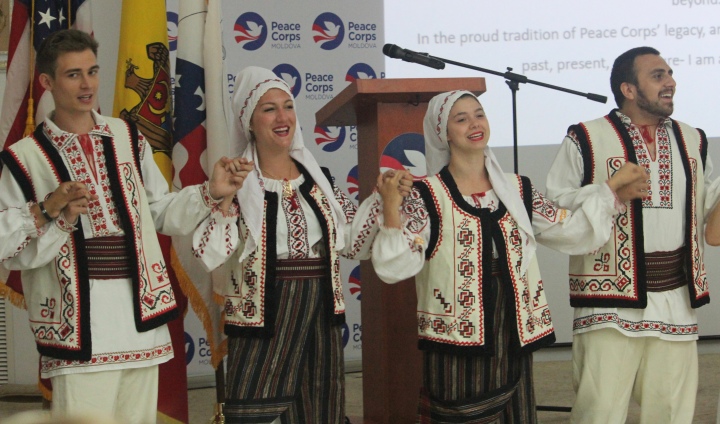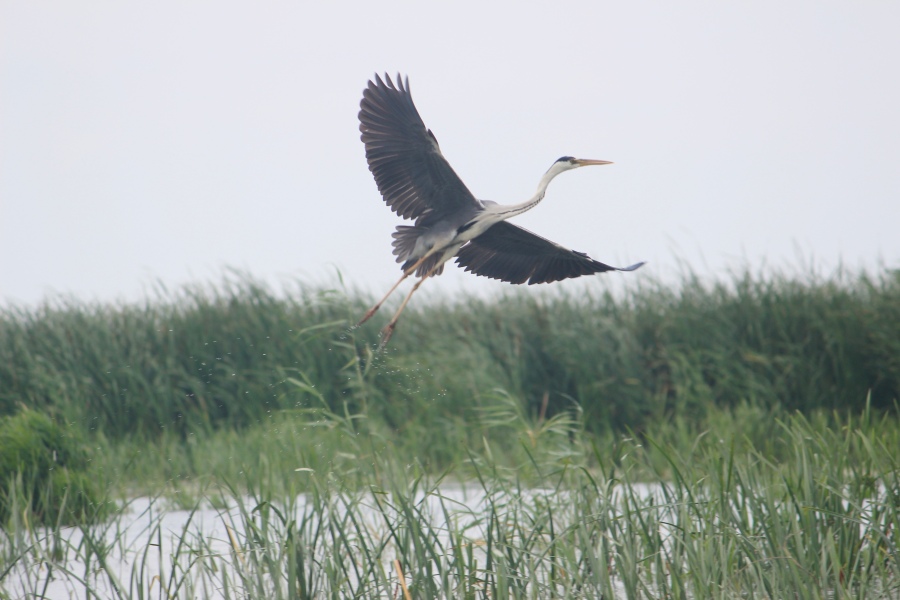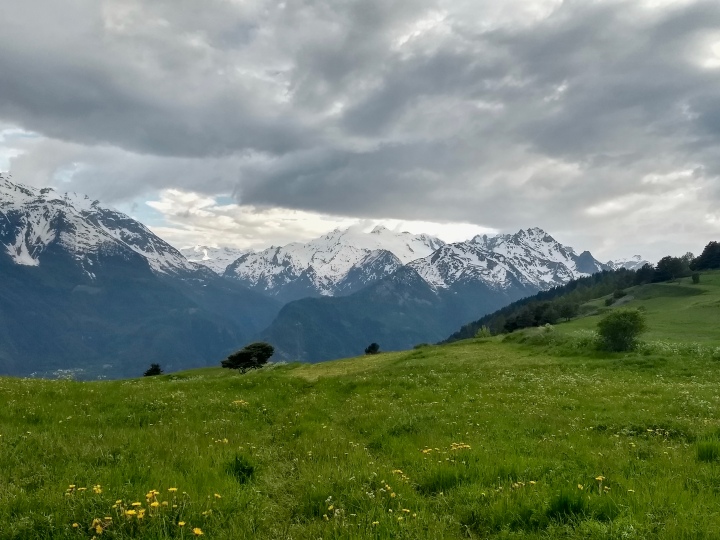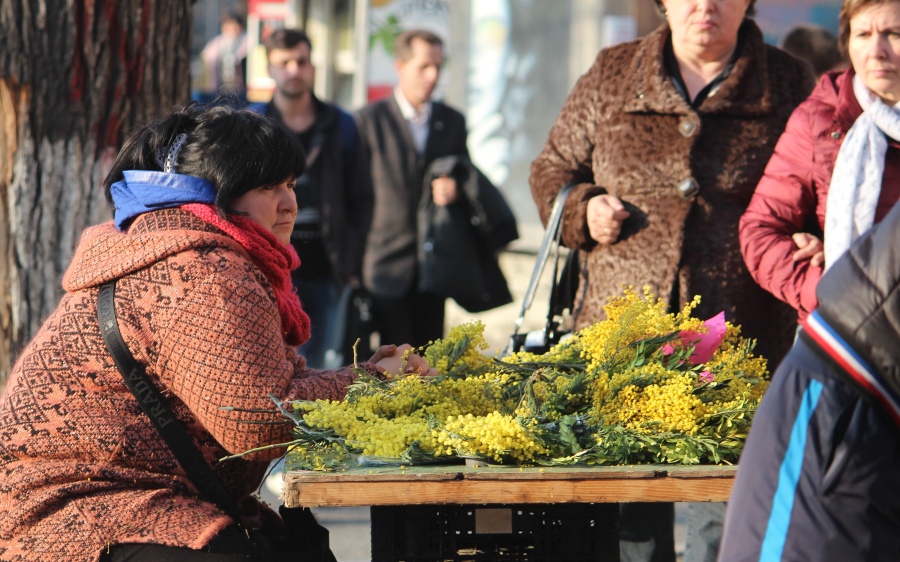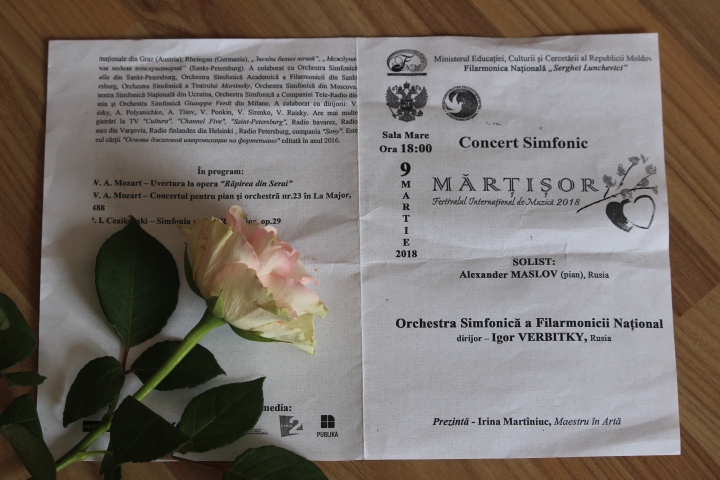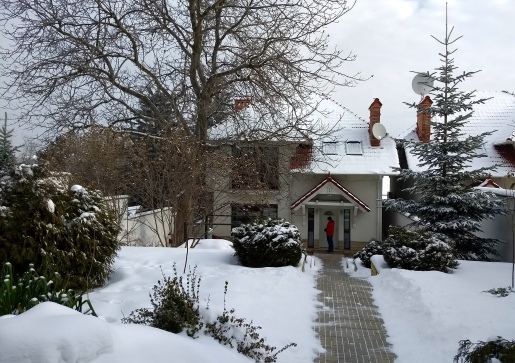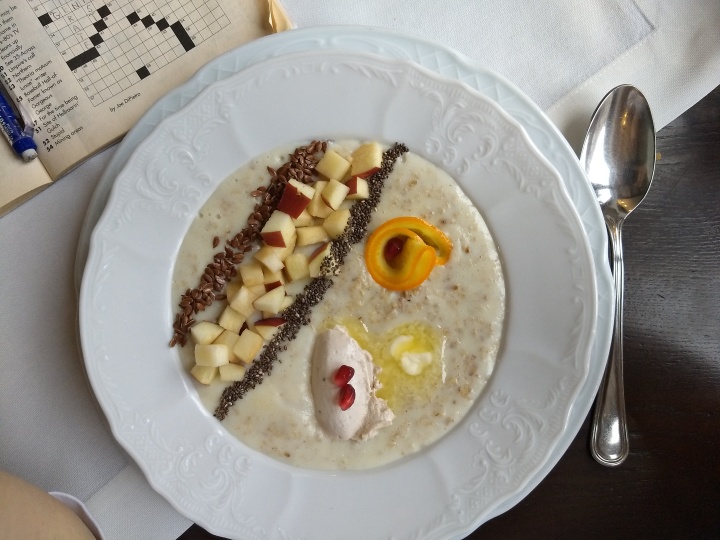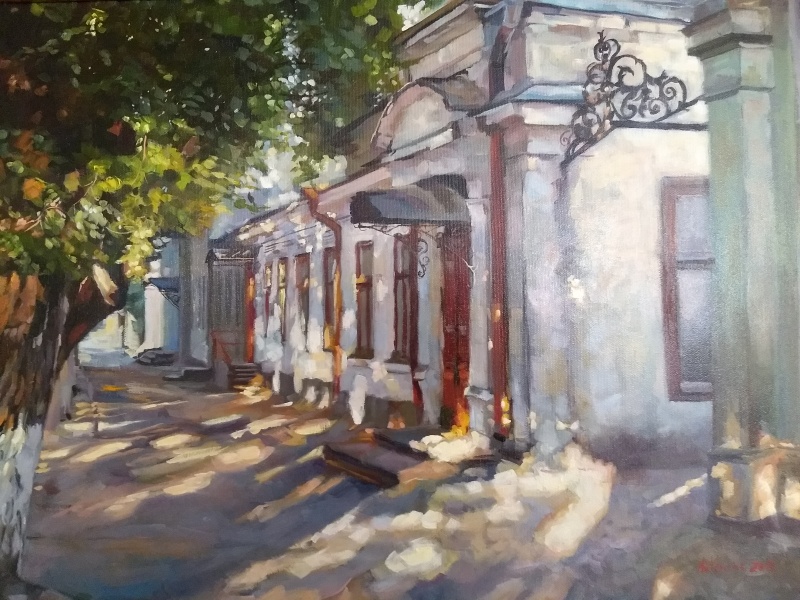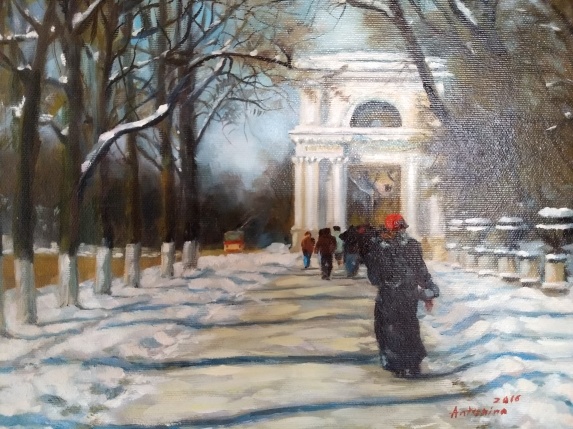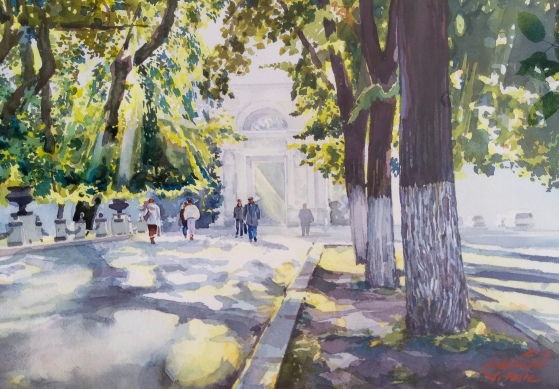“You’re not from around here are you?” The grocery clerk asked this casually of the man ahead of me in the checkout lane, as she carefully placed his eggs on top of the canned beans in his grocery bag. I stifled an amused chuckle. She was Vietnamese American and spoke with a heavy Vietnamese accent, but she had lived long enough in the mountains of North Carolina to recognize as foreign this stranger’s Bostonian accent. Her question was innocent, not meant to exclude, just curious, and I delighted in the fact that her freedom to ask it signified her own comfort with the question. She belonged here now, whether she was born here or not.
I have recalled that scene often over the past seven years, as I am often now the foreigner, someone asked by curious others where I am from. I am clearly not from Moldova, where I currently live. My face is too open, my smile too ready, my countenance too unguarded for my age. I am patently American. They know this before they ask, before I open my mouth to say in elementary Romanian, “Im pare rau; nu am înțeles. Repetați, vă rog.” (I’m sorry, I didn’t understand. Please repeat that.)
I recall the grocery clerk’s question again, as another clerk behind the counter of this tiny roadside Alimentare in rural southern Moldova eyes me curiously. I have asked her, in my halting Romanian if she has any placinte fierbinte, the hot cheese-filled Moldovan pastries which I have come to love fresh from the oven. No, she shakes her head, feeling no need to offer an explanation. The sign in the window clearly advertises placinte fierbinte. Perhaps she thinks I wouldn’t understand; and likely I wouldn’t. I see the question in her eyes, she wonders where I am from, but she is too reserved to ask.
I return to the car hungry and we drive on, past rolling fields of sunflowers and ripening wheat. Bob and I are on our way to the Danube Delta, that vast marsh land just across the border in Romania, where the Danube River meets the Black Sea. We hope to do some birdwatching. It is mid-June, too late in the year to see any of the bird species that migrate through in the early spring on their way to destinations further north, but not too late to see those who claim the Delta as their breeding grounds.
I feel a certain kinship with migrating birds. Like them, I have two homes. I migrate seasonally. Even as I am constantly conscious that I am a foreigner in Moldova, I have come to view our home in Chisinau as a home away from home. And like the migrating birds, I straddle two worlds, but perhaps less adeptly than they do. In one world, I am greeted warmly by name; I am known as a community pediatrician, a professional; I am competent, loved. In the other world, I am a stranger, a bumbling pre-schooler, barely able to speak, making my needs known with the vocabulary of a two-year old.
Migration is on my mind; birds, humans, we are all on the move, either by choice or for survival. I am a “foreigner,” living abroad, only because I chose to retire and accompany my husband to his post overseas. But so many others are dislocated not by choice, but by desperate circumstances. As I write this, the European Union is struggling with how to respond to thousands of African and Middle Eastern immigrants, refugees who have fled situations so hopeless that they were willing to brave a dangerous boat ride across the Mediterranean in hopes of safe refuge.
Here in Moldova, where jobs are scarce and pay very low, the migration problem is emigration. More than 20% of the country’s citizens now live outside Moldova. Approximately 20,000 Moldovan children have neither parent living at home, as both parents are working abroad. They have been left in the care of grandparents or, far too often in the case of teenagers, left on their own, in touch with their parents only by cell phone. Most of the young Moldovans I meet aspire to leave their country.
********
We have been driving for two and a half hours when we cross the border into Romania at Oancea, just west of Cahul. From there we head south to Galați, where we board a car ferry to cross the Danube River. As it approaches the Black Sea, the Danube splits into two branches, the Kilia which runs north through Ukraine, and the Romanian Tulcea, which further splits into the Sulina and the Sfantul Gheorghe. After the short ferry crossing, it is this Sfantul Gheorghe branch that we follow, another three and a half hours south and east by car, through the town of Tulcea where fields of wheat give way to stands of reeds. At Murighiol the road ends and we park our car in a guarded riverside lot. From here we will travel by boat.

The Danube Delta is a low alluvial plain made up of reed marshes, swamps, channels, streamlets, lakes, forested levees and barrier beaches. It has an approximate surface area of 4,152 km2 making it the second largest delta in Europe after the Volga River Delta. If one includes the Razim–Sinoe lagoon complex, just south of the main delta but ecologically related to the delta proper, this brings the total area of the Danube Delta to 5,165 km2, which is about the size of the state of Delaware. This combined territory is included on the list of “Wetlands of International Importance,” under the 1971 Ramsar Convention. It has been listed as a World Heritage Site since 1991, and a UNESCO Biosphere Reserve since 1998.
Although it is considered the best preserved of Europe’s deltas, the Danube Delta has, and continues to be, greatly affected by human activity. Much of the alluvium deposited in the delta has come from soil erosion that resulted from the clearing of forests in the Danube basin during the past 2000 years, and at the mouth of each of its three channels, new land continues to form. Twenty percent of this vast wetland lies below sea level, and more than half of it is flooded in spring and autumn.
It is the reed marsh however, that make the Danube Delta so important. Reed beds cover almost one third of this delta, 156,000 hectares of its surface area, making it one of the largest expanses of reed beds in the world. Because this vast reed bed provides the right conditions for nesting and hatching, and because it is situated on major migratory routes, the Danube Delta attracts birds from six major eco-regions of the world. Whooper swans, plovers, arctic grebes, and cranes fly in from Siberia; saker falcons come from Mongolia; mute swans and mandarin ducks come from China. Large populations of Great White Pelicans, tufted duck, red-crested pochard, graylag goose, pygmy cormorant, purple heron, grey heron, great white egret, little egret, Eurasian spoonbill, glossy ibis, and pheasant are found in the Delta. Golden eagles, white-tailed eagles, osprey, avocets, stilts, shelducks, and various Afro-European song-birds also visit. According to the UNESCO World Heritage Center, over one million individual birds winter in the Danube Delta, and over 320 species can be found in the delta during summer, of which 166 are hatching species and 159 are migratory.
At the dock on the outskirts of Murighiol, where the boat from Green Village will pick us up, we find fellow travelers waiting under the awning of a dockside bar: Romanian couples and families with children, a rowdy group of college students speaking Spanish, and another group of English speaking siblings assembled from their respective homes in Paris, Tel Aviv, and San Francisco. When the motor boat arrives, a twenty-seater with a canvas roof and a hold for the baggage, the captain checks off our names on his list of reservations. His assistant loads our bags and we climb aboard for an hour’s ride.
The Sfantul Gheorghe is wide here, maybe 200 meters across, but it soon branches into narrower interlacing channels that snake their way through the thick reed beds. The firm land of the delta was once covered with large groves of willow trees which have since been cut down almost entirely and replaced with white poplars, but on a few river banks we see the small groves of willows that still remain. Mixed stands of oak, ash, elm and aspen also grow on the levees between sand dunes. We pass smaller boats moored along the banks under sheltering tree branches, each with a lone fisherman who observes us solemnly. An occasional grey heron glides low across the river in front of us.
As we near the far end of the river Sfantu Gheorghe, the low-lying rooftops of the village of Sfantu Gheorghe come into view along the left bank. Here the river widens again, and ahead we can see the flux created by the brown water of the freshwater Danube mixing with the deep blue saltwater of the Black Sea.
At the boat dock in the village of Sfantu Gheorghe, we disembark and are greeted by several Green Village staff. Our bags are loaded onto a cart, and we follow on foot along a raised dike. To our right, ramshackle wooden piers teeter through the reed beds into the river, and to our left, tin and thatch rooftops can be glimpsed through the trees. We descend the left bank of the dike and pass a fenced muddy farmyard, complete with the aroma of fresh cow manure, as we approach the walled enclosure of Green Village.

Our first agenda upon our arrival, is to line up a small boat for an early morning excursion through the small channels and streamlets, to the lakes where breeding birds can be seen. Bigger boats with groups of tourists will be going out later in the morning and we want to get out on the water before they bring the noise of their gregarious conversations. A helpful young man at the front desk calls up a boat owner who warns us that the only boat he has available at an early hour will not have a roof over it. No rain is forecast and we tell him that’s fine, all the better to enter the smallest channels under low growing tree branches.
Our cabin at Green Village is a wooden duplex with a thatched roof and a porch, shaded by a mimosa tree, which overlooks a shallow channel, covered with lily pads. It is 5:30 by the time we have settled in and the low slanting late afternoon sun is perfect for photography, so we head out for an exploratory walk.
We stroll down the dike toward the Black Sea, and meet a line of cattle ambling toward us, returning from wherever it is they have been grazing all day. A dirt road leads us to their pasture, which is interlaced with reed-lined streams, and there we find one cow still knee deep in mud, munching on crisp young reeds.
Does this grazing not cause erosion, contamination of the water, damage to fish; does it not jeopardize the wetland in some way, I wonder? Later I search the Ramsar Convention online documents and find nothing specifically addressing the grazing of livestock in designated Ramsar sites. But an ecologist who responds to my email inquires, addresses my questions. According to Grigore Baboianu, who used to work for the Danube Delta Biosphere Reserve Authority (DDBRA) and is now a consulting ecology expert for the NGO, “The Association of Ecological and Social Consultancy,” both the Ramsar Convention and the DDBRA’s Management Plan, include the protection of traditional economic activities of local communities around the protected deltas. Cattle grazing is allowed in dedicated grazing areas near the main settlements (about 25,000 hectares in total, less than 5% of the total area of the DD.) These areas are managed by local authorities who are responsible for making sure that the rules established by the Danube Delta Biosphere Authority to protect the carrying capacity of the grasslands and ensure sustainability of the wider ecology, are respected. In addition to the use of these dedicated grazing areas, the local people have the right to harvest the grass of the natural grassland by mowing, including the early spring vegetation of the reed beds, for feeding their domestic animals. Authorization for that harvest must be obtained from the Danube Delta Biosphere Reserve Authority.
A stroll through the pasture leads us to a break in the low dunes and out onto a sandy beach along the Black Sea. Far to the north, hundreds of kilometers to our left as we face this shoreline, lies Odessa; and twice as far to the south, to our right and across the mouth of the Danube, lies Istanbul. We walk toward Istanbul.
Close to the lapping waves the sand is covered in the dull black shells of Mediterranean mussels (Mytilus galloprovinicalis). Flipped over they reveal their luminescent mother-of-pearl interiors. I have read that mussels are susceptible to a type of leukemia, disseminated neoplasia, and that this Black Sea species was thought to be resistant, until one case was found among a sample of 200 on this shore. Diseases too, inevitably migrate.
We turn and head back. A few families are still out on the beach and are just now pulling down their kites and gathering up their paraphernalia to head back to the resort for supper. We join them later on the upper deck of The Waterlily restaurant overlooking the river. My supper is a plate of baked peppers stuffed with pike, mamaliga (polenta), and perfectly sautéed spinach with garlic and cream. From our perch on the deck we watch as the green reeds on the east side of the river take on an amber glow in the light of the setting sun behind us, and then the river gradually disappears into the dusk, and we head to our cabin for the night.
In the morning after an early breakfast at The Waterlily’s generous buffet, we walk out to the dock and meet our boat driver. He speaks no English and our Romanian is very limited, but the telephoto lens on my camera and the binoculars hanging around both our necks tell him what he needs to know.
He quietly guides the boat on low speed through the smaller channels, drawing us near to black crowned night herons and bitterns crouched at the bases of reeds, cormorants perched on driftwood, perfectly still grey herons stalking among the reeds, a pair of mute swans with two cygnets, and a solitary great crested grebe.
In one of the secluded lakes we find a colony of Great White Pelicans. Every March, thousands of these pelicans leave the Nile Delta and the Red Sea, migrating to the Danube Delta to nest and raise their brood. Come October, they will depart, arriving back in Africa by late November. The 3,500 pairs who spend their summers in the Danube Delta’s remote lakes make up Europe’s largest breeding population of this species, Pelecanus onocrotalus. This is not the same species as the American white pelican, (Pelicanus erythrorhynchos,) but it is the same species that Bob and I saw in the lakes of the Rift valley when we lived in Ethiopia.
They are feeding this morning and we watch from a few meters away as they demonstrate their communal strategy, herding the fish into the center of a circle and then all at once, as if on cue, diving, tipping their hind ends up, tails into the air, around the circle like synchronized swimmers. When their heads emerge again, their beaks are brimming with fish. Black terns swoop overhead in hopes of getting a share in this bounty.
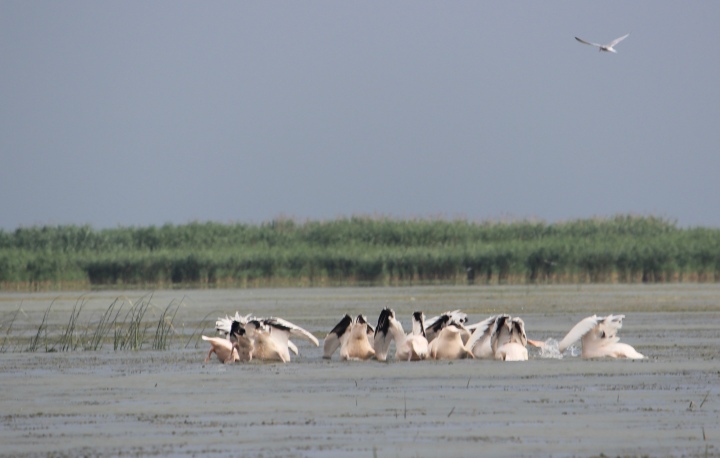
As more pelicans arrive for the morning feast, they glide through the air in front of us and we get a close-up view of their wide wingspans. This species’ wingspan can measure up to 360 cm, giving it the second widest wingspan among flying birds, after the great albatross.

When we return from our morning of birding by boat, the sun has risen high in the sky and it is getting hot. After lunch and a brief siesta, we head out again on foot, walking back through the pasture to the Black Sea, and then south again along the shore toward the river. A woman from Bucharest, and her son who is home from his university studies in Denmark, are picking up trash on the beach and we stop to thank them for their efforts. We gape as she stoops down and scoops up a handful of sea water and puts it to her lips, sipping it up. “Sarat,” she says, (“salty”) and then she points down the beach to where the muddy brown river water of the Sfantu Gheorghe pours into the deep blue water of the Black sea. “Taste it down there. It’s sweet.” We laugh and tell her, “No need; we believe you!”
We round a corner to reach the sandy bank of the river’s edge, and come upon a Hoopoe pecking in the sand with his long beak. The brown crested head and black and white striped back make him immediately recognizable, a familiar bird that we learned to know in Ethiopia. A Graylag Goose is leisurely paddling around a little lagoon protected by a sand bar covered in reeds. As we rest there on the sandy shore of the little lagoon, we hear a Cuckoo call, and turn to see him perched behind us, atop a small tree. Behind him, on a wild rose shrub, we spot a European Roller, its turquoise head brilliant in the afternoon sun.
We scramble through the scrub brush trying to find a trail to loop back along the river’s edge to Green Village, but find none and have to turn back to retrace our steps up the beach. The sun is falling low behind the dunes when we pass through them and out onto the path that leads back to the village through the pasture. Black-winged Stilts and Glossy Ibises are still feeding, wading along with the egrets among the reeds in the shallow water of the creeks running through the pasture.
In the evening, we tally the birds we have identified during this trip. Our list contains forty-one species. We must depart in the morning, but we hope to return in the fall, when the migrating species that have spent the summer in their more northerly breeding grounds, will be passing through again on their way south, back to Africa.
*******
The next morning, we board the boat for the trip back up the river, find our car in the parking lot, and head north, crossing the Danube by ferry again at Galați. At the Romanian Moldovan border, we wait in line with a few other cars until our car is waved into a separate lane for those with diplomatic corps license plates. A quick check of our passports and our vehicle’s documents allows us to cross, while the other vehicles are searched. Our passage is privileged. I think of the Central Americans families waiting in line on foot at the southern border to the US. What they would give for such a passage. They who have fled the violence of gangs, arrive at the US border to find a shockingly cruel reception: their children taken away from them. I have written everyone I can think of to protest this inhumane policy.
The border patrol who checked our passports, surprises us by wishing us a good day in English, as we drive past him and on into Moldova. I recall, by contrast, the agitated voice of an angry American I heard on a live stream radio broadcast, “They come here and they don’t even speak English!” I spoke Spanish with the immigrant mothers in my pediatric practice back in North Carolina, women from Mexico and Central America. They were wonderful mothers: gentle, patient, devoted, sacrificial. They worked in the fields by day, picking tomatoes, peppers and apples, and attended English classes in the evenings. Any of them could have asked the price of a bag of rice in English, but trying to communicate in a foreign language when you are worried about your child who is running a high fever, or when you are lying on a hospital gurney about to give birth, is another matter. Anyone who says “those immigrants should learn our language,” should themselves, I think, have to spend some extended time abroad, attempting to function with a new language. Romanian is my third foreign language, after Spanish and Amharic, and learning it has not been as easy as I expected at age 63, nor have I given it the full effort that I should. But Moldovans forgive me for not being very proficient with Romanian. They praise me, like a good two-year-old, for being able to saying “Buna diminuata,” (good morning).
In a Moldovan village just north of Cahul, we spot a stork’s nest and watch a mother stork feeding her brood, the upturned beaks reaching above the rim of the stick nest, open, insistent. Having a stork nest in your village brings good luck, so the locals say. They welcome these summer residents, building nesting platforms atop electric poles to attract them. The stork mothers have it easy, I think. Their flight may be long, but they move freely over one planet. They have no borders to cross. No one checks their passport for a visa. No one questions their instinct to survive, to feed their children.
We drive north toward Chisinau. A woman wearing an apron and a bandana stands by the side of the road, and next to her, a crate of peaches. We pull over and I ask her where the peaches are from. They are from her own orchard she says, and I try one. They are juicy, sweet, bursting with flavor. I buy a bagful and I see her studying me, gathering her courage to be so bold as to ask. I know what’s coming and I smile, inviting the familiar question. It causes me no problem, privileged foreigner that I am, but I think of the millions of others, in far different circumstances, for whom the coming question would invoke a reflex of fear: “Nu sunteți de aich, nu-i așa?” “You’re not from around here, are you?”

Our Bird List from The Danube Delta: 41 species
White Pelican, Grey Heron, Black Crowned Night Heron, Cormorant, Great Egret, Little Egret, Mute Swan, Glossy Ibis, Black-winged Stilt, Eurasian Coot, Moorhen, Bittern, Little Bittern, Black Headed Gull, Common Gull, Common Tern, Black Tern, Great Crested Grebe, Pied Billed Grebe, Mallard, Greylag Goose, White Stork, Great Reed Warbler, Black Kite, Marsh Harrier, Cuckoo, Greater Grey Shrike, Red-backed Shrike, Skylark, Pied Wagtail, European Roller, BeeEater, Hoopoe, Barn Swallow, Collared Dove, Pheasant, Magpie, House sparrow, Hooded Crow, Raven, Common Starling
